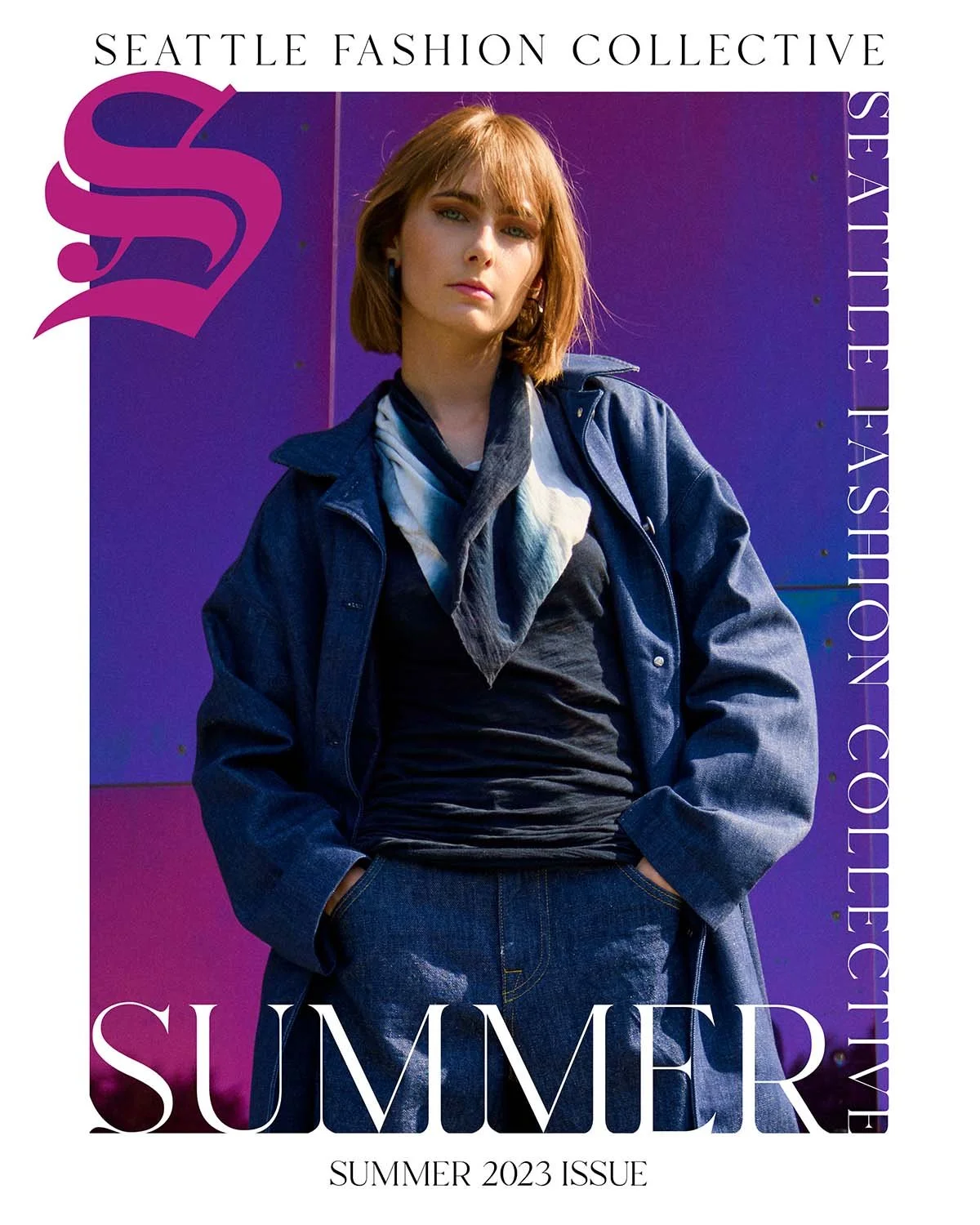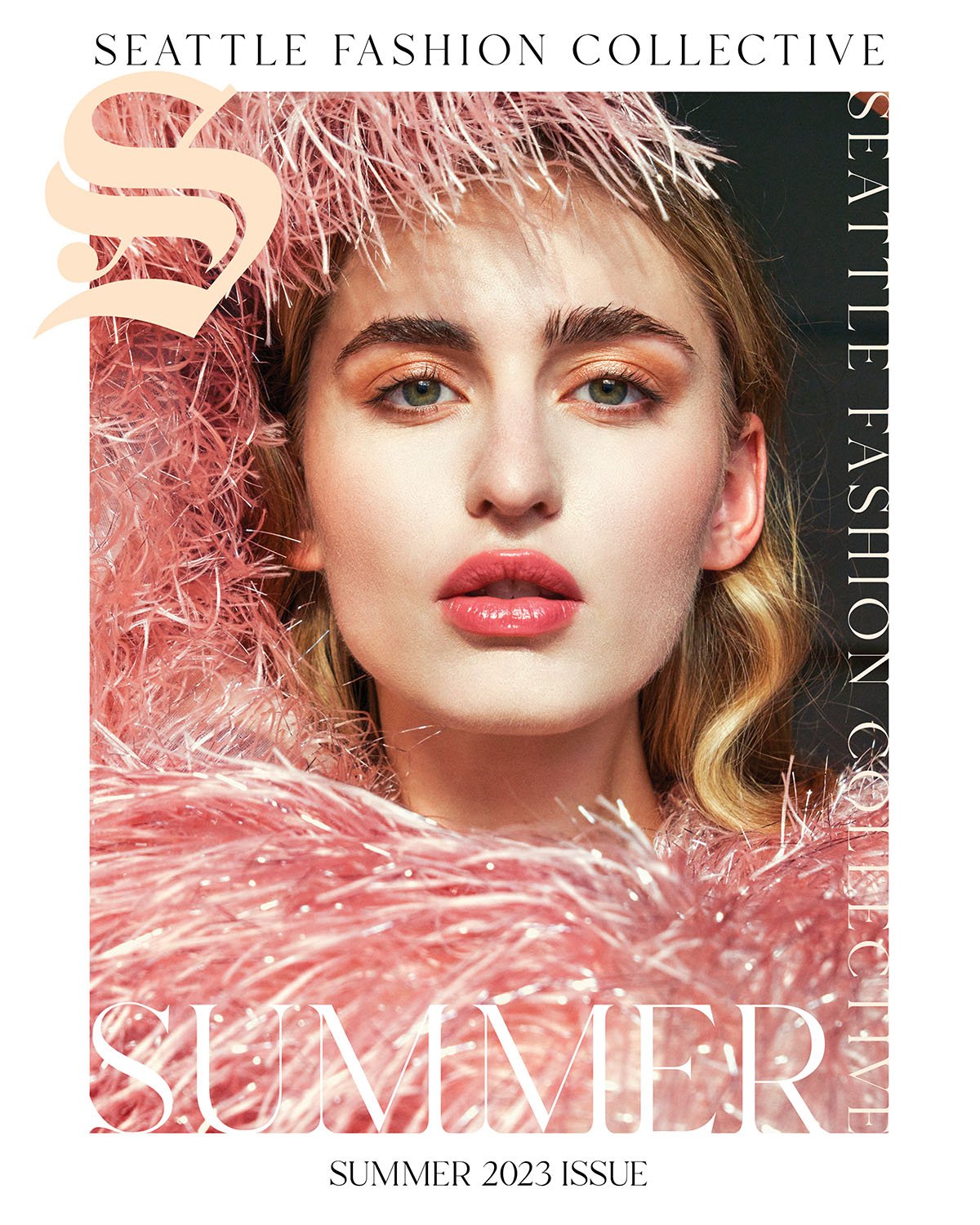Editor's Letter | Summer '22 Issue
6 min read | Magazine | A.M.
This season marks a significant shift, both in the fashion industry at large and for Seattle Fashion Collective at home. There’s something undeniable in the air. While the media landscape reminds us of our constant state-of-emergency, the flipped-side of the coin tells of a planet poised to begin an era of increased abundance where the quality of life for everyone will benefit from innovations in energy, tech, production, logistics, automation, and in terms of fashion, the promise of a truly sustainable era. Is this the inevitable arch of history or a hyper-capitalist-fever-dream? Still, human rights and social causes move forward at inspiring rates as people everywhere emerge from their spring routines to embrace a new season with new adventures and, indeed, new fashion.
That’s not to suggest that we’re free from the many issues beleaguering our communities and threatening democracy on a global scale. That’s still there. But there’s undoubtably an energy moving throughout the Northwest that speaks to the very heart of our fair-weathered sensibilities and calls us to engage with the world on an international scale and with a universal language. And no, it’s not Python, Swift, or C++. At least, not entirely. Not yet.
We’ve all heard the headlines, and while it’s beyond our scope to address them in any detail, it’s worth noting for posterity and for their impact on our ongoing fashion conversations. On the national scene, gun violence has been on the rise. School shootings in particular remind us of how entirely broken many of our systems remain. Though the rate of gun related deaths has been declining from previous years, Pew Research reports the overall number of gun deaths in 2020 was highest on record with data still emerging from 2021. At the time of writing, Texas has endured the deadliest school shooting since Sandy Hook in 2012, and has now become the 27th U.S. school shooting so far this year. That’s nearly one for every day in the month of February. Amidst the impassioned outcries, we remain hopeful for change, yet are reminded once again of the complete political deadlock preventing such progress, whilst a nation collectively mourns yet another horrific event in a long series of all-too-common tragedies.
On the fashion scene, New York Senate Bill S8638A (a.k.a. Fashion Worker’s Act) gains momentum as Amazon Union Leader Chris Smalls joins the conversation to enact basic protections for fashion workers that are commonly, and to our industry’s shame, left without payment protections and are too often required to work in unsafe and unregulated conditions.
CFDA celebrates their 60th anniversary, partnering with Amazon Fashion for the 2022 CFDA Fashion Awards co-hosted by luminaries in the field including Gabriela Hearst, Joseph Altuzarra, Aurora James, Lazaro Hernandez and Jack McCollough. It’s been an incredible year for fashion, both artistically and commercially, with many upcoming talents circumventing the Fashion Calendar to evangelize their brands throughout our physical universe in addition to the emerging metaversal one.
Internationally—and unsurprisingly—name brands from LVMH and Kering report consistent revenue and engage with emerging metaversal and blockchain technologies to find new economies of endless scale and, thus, endless profits. NFTs are the name-of-the-game, and unfortunately (or in the case of the crypto crash, perhaps not?) many of us are non-playable-characters. Meanwhile, countries continue their endless posturing for supremacy as threats to global democracies, both foreign and domestic, find new opportunities in internet connected social platforms. We can go viral on TikTok, sell products on Instagram, and influence elections in global democracies on Facebook.
But the internet isn’t simply a place where hope dies in darkness. It has been a lifeline for those fleeing wartime atrocities and seeking refuge in neighboring nations. Elon Musk has made headlines for a variety of things, but in the case of deploying Starlink over Ukraine, their effects have been largely beneficial in establishing life-saving connections between bomb-blasted civilians and a world scrambling for any practical way to help.
The war in Ukraine rages on as governments remain uncomfortably split on its outcome. Members of NATO have sent mixed signals, denouncing Russian hostilities whilst lacking the ability to cease them altogether. Many countries have sided with Russia including Belarus and several former Soviet satellites. China remains economically tied to both Russia and the United States, thus remaining neutral on the invasion. Finland and Sweden—famously neutral countries—have now applied for NATO protections in what can perhaps be described as the clearest example of irony since Alanis Morissette penned her magnum opus.
Surprisingly (or perhaps not), according to Axios, the Heard-Depp libel lawsuit was the single most discussed and searched topic in our present media landscape—more than inflation, abortion legislation and the war in Ukraine combined. News organizations large and small devoted weeks to headlines and an assortment of hot-takes on what has become the most drama-laden legal proceeding in recent memory. At the time of writing, jurors awarded Depp $15 million in damages, whilst awarding Heard $2 million. The decision is expected to be appealed.
And that doesn’t include gas prices, midterm elections, baby formula shortages—the list goes on.
Here in Seattle, summer signals our region’s return to peak tourism mode, which has the benefit of allowing businesses to heavily invest in their momentum, yet has the unintended consequence of permitting our most vulnerable populations to remain at risk from what continues to be a highly transmissible and mutating virus. Even Gov. Inslee reported a positive COVID-19 diagnosis, though expressed gratitude that symptoms were mild as a result of vaccinations.
Both corporate and independent fashion retailers report increased profits, whilst Nordstrom in particular reports stock splurging revenue increases year-over-year. Stockists like Clementines, Likelihood, Corre, Visette Boutique—and fashion houses like Sarah Alexandra, Sskein, Paychi Guh, Lisa Marie Couture, Guillermo Bravo—have shown growth in their bottom lines, social presence, and even square footage.
Likelihood hosted Anwar Carrots & Freddie Gibbs in what can easily be described as Capitol Hill’s fashion event of the season. Luly Yang contributed their sartorial services for charity helping raise $1.2 million for The Fifth Avenue Theatre. Baby & Company delighted Downtown with yet another phenomenal popup at the Fourth Avenue Collective. Lisa Marie Couture expanded into a new location with a grand opening slated for later this fall. Guillermo Bravo successfully funded their upcoming FSI-1 with orders currently going into production in Italy.
Which leaves us. Despite a global pandemic, social upheaval, fiscal uncertainty, and the looming pressures of an industry in a constant state of redefining the way we experience and purchase apparel and accessories, our soul remains intact. Perhaps Henley said it best—we are bloody, but unbowed.
As a result, Seattle Fashion Collective is evolving. In addition to being the central hub for all things fashion in Seattle, it is our desire to begin a movement toward a new yet familiar vision at the intersection of art, science, and commerce that champions fashion on a local scale with global repercussions. To be honest, that was always the intent. It’s in the name, obvs.
Our Summer ’22 Issue focuses on identity, both personal and professional, within the greater fashion landscape. We ask difficult questions and seek meaningful actions. How does fashion connect with our region’s continued health and wellbeing? What visions currently captivate us and inspire growth and purpose? How do we communicate our intrinsic value and identity to a world so often at odds with itself? And more personally, how can we best serve our community with timely and relevant coverage?
The proof is in the issue, from Walace Style, Sskein, Paychi Guh, Molly Ray Parfums, Hollis Hamilton, and many others. All of whom faced incredible odds and have come through the other side with a dignity and grace befitting an Olympic medalist. And all of whom collectively add to the rich beauty and independent spirit of our now thriving industry. Fashion, after all, is more than the clothes we wear at the tyranny of the urgent. It’s about People. It’s about the richness of fantasy and the stark realities of social commentary. It is at once timeless and a portrait of the times. And we truly believe that at its best, fashion can shift culture and transform lives for the better.
The questions then become, where do we start? And what steps do we take to get there?






